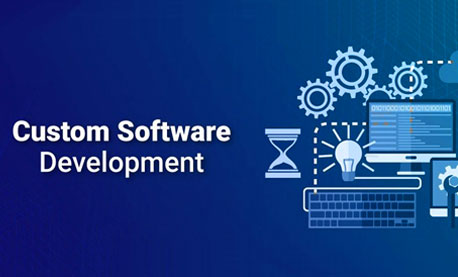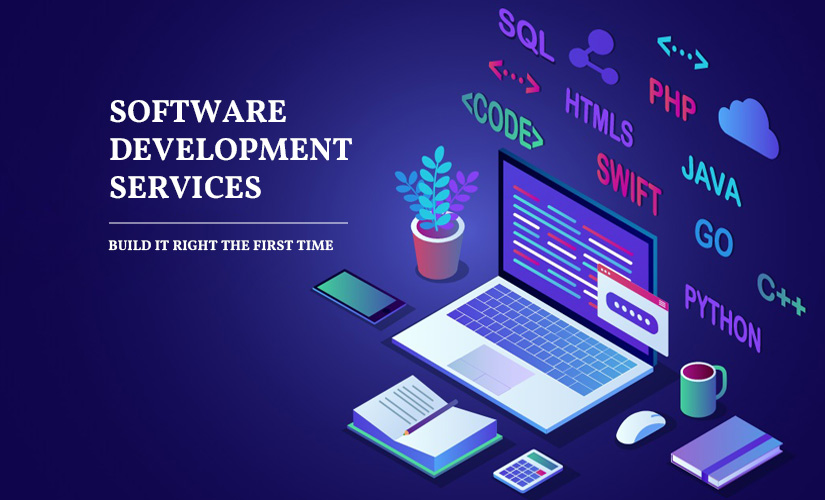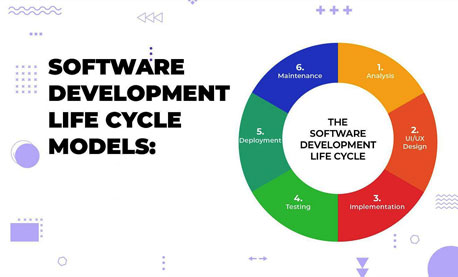Custom Software Development: Creating Solutions
In today’s rapidly evolving business landscape, it’s crucial to have efficient and effective software solutions that meet your specific needs. Off-the-shelf software often falls short in addressing unique business requirements, leading to inefficiencies and missed opportunities. That’s where custom software development comes into play. In this article, we will explore the concept of custom software development and how it can empower your business to thrive in the digital era.
Introduction
In the digital age, software plays a pivotal role in driving business success. However, not all businesses are the same, and each has its own set of challenges and requirements. Custom software development offers a tailored approach to building software solutions that align perfectly with your business goals. By understanding your unique needs, custom software development can provide a competitive advantage, improve operational efficiency, and enhance customer experiences.
Understanding Custom Software Development
Custom software development involves designing, creating, and maintaining software applications specifically tailored to a company’s individual needs. Unlike off-the-shelf software, which offers generic features, custom software is built from scratch or modified to meet the specific requirements of a business. It allows for greater flexibility, scalability, and integration possibilities, providing a personalized solution that optimizes processes and drives growth.
Benefits of Custom Software Development
Addressing Unique Business Needs: Custom software development enables businesses to address their unique pain points and challenges effectively. By designing software specifically for your requirements, you can streamline operations, automate tasks, and eliminate bottlenecks.
- Enhanced Efficiency and Productivity: Off-the-shelf software often includes unnecessary features, leading to complexity and decreased productivity. Custom software focuses on the essential functionalities, resulting in a user-friendly interface and improved efficiency.
- Scalability and Flexibility: Custom software can grow and evolve alongside your business. It is designed with scalability in mind, allowing you to add new features, modules, or integrations as your business expands or changes over time.
- Competitive Advantage: Custom software gives your business a competitive edge by offering unique functionalities and features tailored to your industry. It allows you to differentiate yourself from competitors and provide superior services to your customers.
- Cost-effectiveness in the Long Run: While custom software development may require a higher upfront investment, it can save costs in the long run. Off-the-shelf software often requires costly licensing fees and may not meet all your requirements, leading to additional expenses for workarounds or modifications.

Identifying Business Needs
Before embarking on a custom software development project, it’s crucial to identify your business needs comprehensively. This involves conducting a thorough analysis of your existing processes, pain points, and future goals. Engage key stakeholders, including employees, customers, and partners, to gather insights and prioritize requirements. Clearly defining your business needs will serve as a solid foundation for the development process.
The Custom Software Development Process
The custom software development process consists of several stages, each vital for the successful delivery of a tailored solution. Here’s an overview of the typical steps involved:
1. Requirement Gathering and Analysis
In this initial phase, the development team works closely with your business to gather requirements, analyze existing systems, and identify technical specifications. This step lays the groundwork for the entire development process.
2. Design and Prototyping
Once the requirements are defined, the development team creates a comprehensive design and prototypes the software’s user interface. This stage focuses on usability, ensuring the software is intuitive and aligns with your business processes.
3. Development and Coding
The development phase involves transforming the design into a functional software application. Skilled developers write clean code, following best practices and industry standards. Regular communication and collaboration with your team ensure transparency and alignment.
4. Testing and Quality Assurance
Thorough testing and quality assurance are essential to ensure the software performs flawlessly. This includes functional testing, performance testing, security testing, and user acceptance testing. Bugs and issues are identified and fixed promptly.
5. Deployment and Integration
Once the software is thoroughly tested and approved, it is deployed and integrated into your existing infrastructure. This stage requires careful planning to ensure a smooth transition and minimal disruption to your operations.
6. Maintenance and Support
Software development doesn’t end with deployment. Ongoing maintenance and support are crucial to address issues, release updates, and provide technical assistance. Regular maintenance keeps the software secure, up to date, and optimized for performance.
Selecting a Custom Software Development Partner
Choosing the right custom software development partner is critical for the success of your project. Consider the following factors when evaluating potential partners:
1. Expertise and Experience
Look for a development partner with a strong track record and expertise in developing custom software solutions. Check their portfolio and client testimonials to assess their capabilities and industry experience.
2. Collaboration and Communication
Effective collaboration and communication are essential for a successful partnership. Ensure the development team is responsive, understands your business goals, and keeps you involved throughout the development process.
3. Scalability and Long-term Support
Choose a partner that can scale with your business and provide long-term support. Your software may require updates, integrations, or enhancements in the future, and a reliable partner can accommodate those needs.
4. Security and Data Protection
Ensure that the development partner follows best practices for security and data protection. Your software should be built with robust security measures to protect sensitive information and guard against cyber threats.
Factors to Consider for Successful Custom Software Development
Successful custom software development involves careful planning and execution. Consider the following factors to maximize the outcomes of your project:
- Clear Communication: Maintain open and frequent communication with the development team. Clearly articulate your requirements, expectations, and timelines to ensure alignment and avoid misunderstandings.
- User-Centric Approach: Focus on the end-users throughout the development process. Gather feedback, conduct usability testing, and iterate on the design to create an intuitive and user-friendly software solution.
- Agile Methodology: Adopt an agile development methodology that promotes flexibility and incremental progress. Regularly review and adapt the project based on feedback, allowing for adjustments and improvements.
- Project Management: Employ effective project management practices to ensure the project stays on track. Define milestones, allocate resources, and establish a transparent workflow to manage timelines and deliverables.
- Quality Assurance: Prioritize rigorous testing and quality assurance processes. Conduct comprehensive testing at each stage to identify and rectify any issues early on, ensuring a reliable and high-performing software solution.
Ensuring Security and Scalability
Security and scalability are paramount when developing custom software solutions. Here are some key considerations:
- Secure Development Practices: Implement secure coding practices, adhere to industry standards, and conduct regular security audits. This helps protect your software and sensitive data from potential threats.
- Data Encryption and Access Control: Use encryption techniques to safeguard data during transmission and storage. Implement robust access controls to ensure only authorized individuals can access sensitive information.
- Regular Updates and Patches: Stay proactive in applying software updates and patches to address vulnerabilities and mitigate potential risks. Regularly monitoring and updating your software ensures it remains secure over time.
- Scalable Architecture: Design your software with scalability in mind. Consider future growth and the ability to handle increased data volume, user traffic, and feature enhancements. Scalable software reduces the need for frequent redevelopments.
Integrating Custom Software with Existing Systems
Integrating custom software with existing systems can unlock new possibilities and streamline processes. Consider the following integration aspects:
- API Integration: Leverage application programming interfaces (APIs) to enable seamless communication and data exchange between your custom software and other systems. APIs facilitate integration with third-party services and platforms.
- Data Synchronization: Ensure data synchronization between your custom software and existing systems to maintain consistency and avoid duplication. Real-time or scheduled data updates enhance operational efficiency and accuracy.
- Legacy System Migration: If you’re replacing outdated systems, plan a smooth migration process. Gradual migration, data mapping, and parallel operations can minimize disruption while transitioning to the new software.
- Collaborative Tools: Consider integrating collaborative tools such as project management platforms, customer relationship management (CRM) systems, or enterprise resource planning (ERP) systems to enhance productivity and streamline workflows.
Testing and Deployment
Thorough testing and seamless deployment are critical to the success of custom software solutions. Follow these best practices:
- Test Plan and Strategy: Create a comprehensive test plan, outlining the testing approach, objectives, and expected outcomes. Perform different types of testing, including functional, performance, security, and compatibility testing.
- User Acceptance Testing (UAT): Engage end-users in UAT to ensure the software meets their needs and expectations. Feedback from UAT helps identify any required modifications or enhancements before final deployment.
- Deployment Planning: Develop a deployment plan that outlines the steps, resources, and timelines required for a smooth transition. Conduct pilot deployments or phased rollouts to minimize risks and monitor the software’s performance in a controlled environment.
- Post-Deployment Testing and Fixes: Monitor the software closely after deployment to identify any issues that may arise in the live environment. Promptly address any bugs or performance issues to ensure a seamless user experience.
Maintenance and Support
Ongoing maintenance and support are crucial to keep your custom software running smoothly. Consider the following aspects:
- Bug Fixes and Updates: Regularly release bug fixes, updates, and new features to address evolving business needs and improve software performance. Stay proactive in identifying and rectifying any issues that may arise.
- Technical Support: Provide responsive and reliable technical support to address any user queries or issues promptly. A dedicated support team can ensure uninterrupted operations and assist users with troubleshooting.
- Performance Monitoring: Continuously monitor the software’s performance, including response times, resource utilization, and error rates. Proactively identify bottlenecks or areas for optimization to maintain optimal performance.
- User Feedback and Iterations: Encourage users to provide feedback and suggestions for improving the software. Incorporate valuable insights into future updates and iterations to enhance user satisfaction and address evolving business needs.
Measuring Success and ROI
To measure the success of your custom software development project, consider the following metrics:
- Business Goals Achievement: Evaluate whether the software solution has helped achieve your predefined business goals. This can include increased operational efficiency, cost savings, revenue growth, or improved customer satisfaction.
- User Adoption and Satisfaction: Measure user adoption rates and gather feedback on user satisfaction through surveys or user interviews. Positive user experiences and high adoption rates indicate the software’s effectiveness.
- ROI Analysis: Conduct a thorough return on investment (ROI) analysis by comparing the costs invested in custom software development with the benefits and savings achieved. Consider both tangible and intangible returns when evaluating ROI.
- Key Performance Indicators (KPIs): Define KPIs specific to your business and software solution. This could include metrics like user engagement, conversion rates, error rates, or time saved on specific tasks.
Case Studies of Successful Custom Software Development
XYZ Company: Streamlining Inventory Management
XYZ Company, a leading retailer, struggled with inventory management across multiple locations. Custom software was developed to streamline inventory tracking, automate replenishment processes, and provide real-time insights. The solution resulted in significant cost savings, reduced stockouts, and improved customer satisfaction.
ABC Corporation: Enhancing Customer Relationship Management
ABC Corporation, a global service provider, needed a tailored customer relationship management (CRM) solution to manage their complex sales cycles. Custom software was developed to track leads, automate sales processes, and provide personalized customer interactions. The CRM solution led to increased sales productivity, improved customer retention, and enhanced data analytics capabilities.
Conclusion
Custom software development offers businesses a unique opportunity to create tailored solutions that address their specific needs. By understanding your business requirements, engaging with a reliable development partner, and following best practices throughout the development process, you can unlock numerous benefits. From improved efficiency and scalability to enhanced security and integration, custom software empowers businesses to thrive in today’s competitive landscape.
Investing in custom software development allows you to stay ahead of the curve, streamline operations, and deliver exceptional customer experiences. Embrace the power of tailored solutions and witness the transformative impact on your business.
FAQs
1. How long does custom software development typically take?
Custom software development timelines vary depending on the complexity of the project and specific requirements. On average, a custom software development project can take anywhere from a few months to a year or more.
2. What is the cost of custom software development?
The cost of custom software development depends on various factors such as project scope, complexity, and development hours required. It’s best to consult with a custom software development provider to get an accurate cost estimate based on your specific needs.
3. Can I make changes to the software after it’s developed?
Yes, one of the advantages of custom software is its flexibility. You can make changes, add new features, or enhance existing functionalities even after the software is developed. However, it’s important to plan for such modifications during the initial development stages.
4. How can I ensure the security of my custom software?
To ensure the security of your custom software, follow secure development practices, conduct regular security audits, implement encryption techniques, and stay proactive in applying software updates and patches. Working with a reputable development partner experienced in security measures is also crucial.
5. Can custom software integrate with my existing systems?
Yes, custom software can be seamlessly integrated with existing systems. Through APIs and data synchronization, custom software can communicate and exchange data with other software applications, ensuring a cohesive ecosystem that enhances productivity and efficiency.












